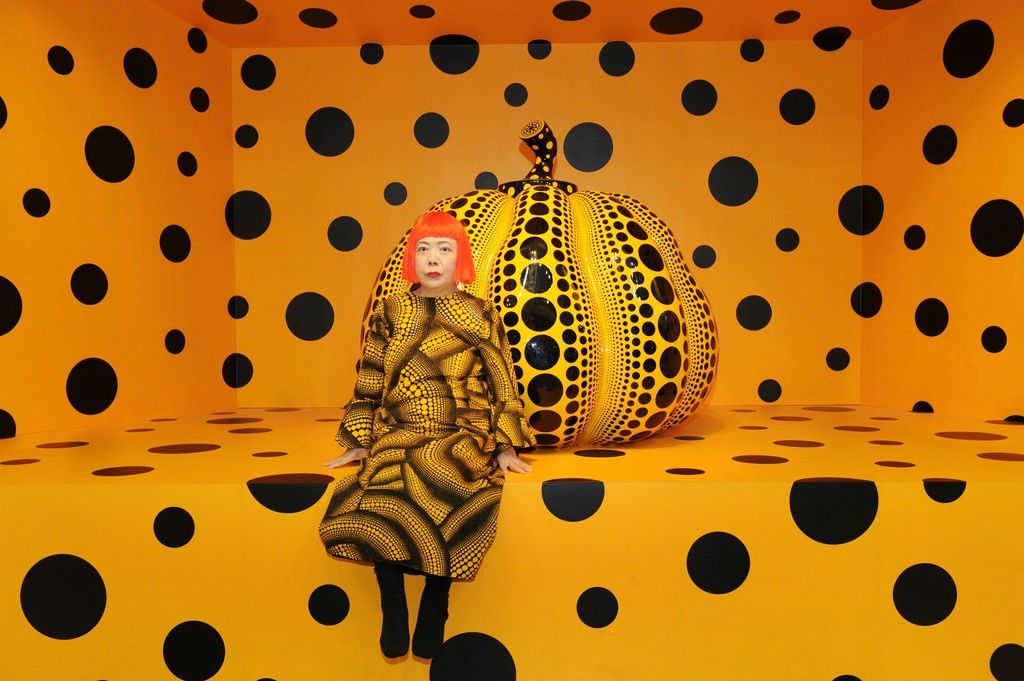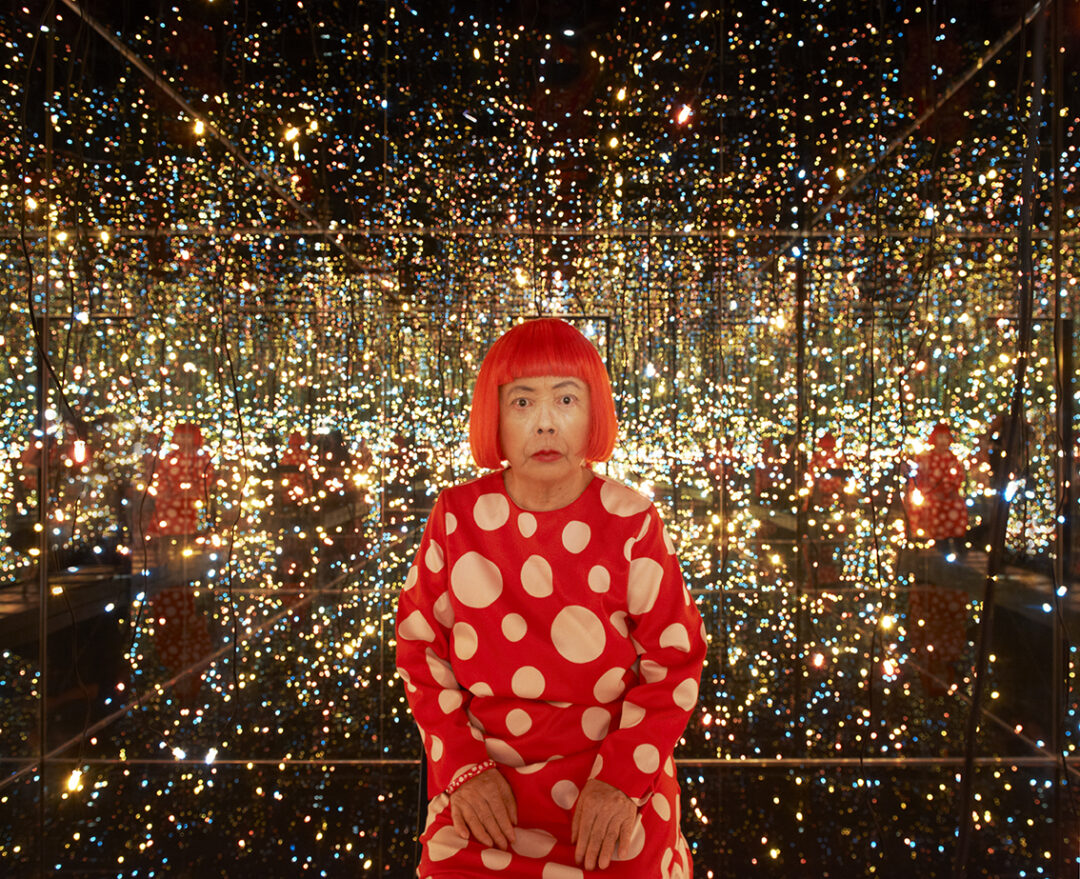
Art and life in the works of Yayoi Kusama are inextricably linked.
Born in Japan, in Matsumoto, in 1929, her family belonged to high society and had decided on a specific position for her in society. As a child, however, Kusama began to have auditory and visual hallucinations.
Right from the start, art turns out to be a necessary and therapeutic element, with which she manages her hallucinations. In Yayoi Kusama’s works, this element is present, transforming an altered reality into pure art.
The Infinite Present in the works of Yayoi Kusama

As Yayoi Kusama herself recounted, it all started in a field of flowers owned by the family:
“There was a blinding light, I was blinded by the flowers, looking around me there was that lingering image, I felt like I was sinking as if those flowers wanted to annihilate me”.
Yayoi Kusama’s family does not accept her passion for art and does not even understand what her daughter’s world view is.
Her mother destroys the artist’s drawings before she can finish them and, for this very reason, one of her first art forms are polka dots, elements that are quick to draw and considered harmless.
Yayoi Kusama devoted herself with great dedication to the study of art, despite her family’s opposition, and was impressed by the works of Georgia O’Keeffe, Alfred Stieglitz’s wife, and decided to write to her. It was after receiving her reply that Yayoi Kusama decided to move to the United States in 1958, staying first in Seattle and then in New York.
The beginnings in the United States were not easy. Yayoi Kusama found considerable difficulties in the artistic environment, both because she was strongly masculine and because her Japanese origins hindered her chances of being accepted by American culture.
However, Yayoi Kusama’s works did not go unnoticed and soon she began to make her way within the New York avant-garde and began to be considered a revolutionary for her time.
After achieving worldwide fame in 1973 Yayoi Kusama returned to Japan, where in 1977 she spontaneously checked herself into a psychiatric institution where she still lives today. However, this did not stop her from renting a studio in front of the hospital, to which she went every day to paint and work.
During these years, she continued to write and create works, also collaborating with famous fashion brands and devoting herself completely to her research, painting pictures and writing novels and poems.
THE INFINITE IN ONE OF YAYOI KUSAMA’S LATEST WORKS
One of Yayoi Kusama’s latest works is entitled Fireflies on the Water and is a room-sized installation that consists of a dark room lined with mirrors on all sides. In the centre of the room is a pool of water, conveying a sense of stillness, in which a pier-like viewing platform protrudes and 150 small lights hang from the ceiling that, as the title suggests, look like fireflies.
These elements create a dazzling effect of direct and reflected light, emanating from both the mirrors and the surface of the water.
Space appears infinite, without top or bottom, beginning or end. As in Yayoi Kusama’s early installations, including the Infinity Mirror Room (1965), the latter embodies an almost hallucinatory approach to reality. Although linked to the artist’s personal mythology and the process of therapeutic work, this work also refers to sources as varied as the myth of Narcissus and Kusama’s native Japanese landscape.
The place that hosts the installation is muffled in light and sound and the arrival at the threshold of the room has the value of a meditative act, of a contemplation capable of taking the audience to another and different dimension, an invitation to abandon the sense of self and surrender to a kind of meditative magic.

